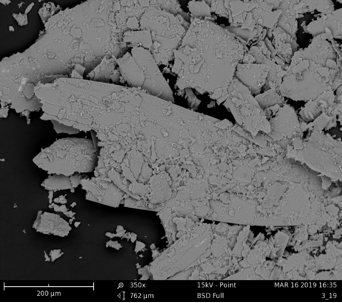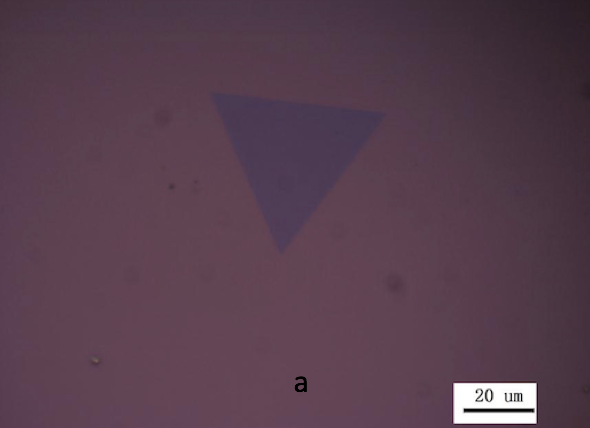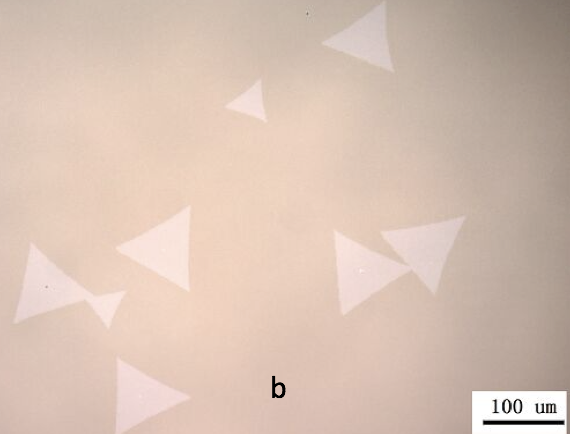-
Graphene-like Materials
Dec 18, 2017 | ACS MATERIAL LLCSince the discovery of graphene, other two-dimensional materials have gained further interest in hopes of finding similar extraordinary properties. Materials with a similar structure to that of graphene, such as black phosphorus and transition metal dichalcogenides, have been researched to potentially be used in applications comparable such as electronics, batteries, optical devices and more. With the ability to absorb light from visible to infrared, the possession of bandgaps, and a low friction coefficient, these 2D materials possess characteristics that sets them apart from its predecessor. This report will describe more about graphene-like materials and its promising use in future applications.
Introduction
Two-dimensional materials are paving its way into a number of potential applications based on similar structure to that of graphene which is why they are considered to be graphene-like materials.1 Materials, such as black phosphorus and transition metal dichalcogenides, are able to be synthesized in a similar manner to graphene and formed into 2D layers composed of just a few or even a single atomic layer. Although the resemblance to graphene is great, they still possess their own unique traits that graphene lacks. While graphene has a zero bandgap, a number of these 2D materials have a tunable bandgap, making them great for electronic devices, and a low friction coefficient which allows them to be used as a dry lubricant. These features are highlighted in many potential applications similar to graphene but also in their own right.
Black Phosphorus
Black phosphorus (BP) is a 2D material stemming from a rather rare allotrope of phosphorus that is composed of puckered-honeycomb layers stacked by weak van der Waals interactions.2 They can be mechanically exfoliated into a single layer of phosphorene in the same manner that graphene can be obtained from graphite. In comparison to white, violet and red phosphorus, BP is widely accepted as the most stable form of phosphorus at low temperature and pressure.3 It has a bandgap of approximately 0.3 eV for bulk and 2 eV for a single layer, which is considered to bridge the energy gap between the zero bandgap of graphene and relatively large bandgap of many transition metal dichalcogenides (TMDs), such as MoS2, MoSe2, WS2 and WSe2.4,5 Exfoliated BP have displayed a relatively high charge carrier mobility of up to 1000 cm2/V·s making it especially fitting for electronic devices.6
There are a number of ways to synthesize BP crystals such as chemical vapor transport (CVT) deposition process, ball milling and high-pressure synthesis.2 The chemical vapor deposition (CVD) method has been utilized to produce thin layers of sheet-like BP to form a large quantity of the material. Since BP is the second most elementary material after graphene, they can be exfoliated from bulk crystals into monolayer to few-layer phosphorene. ACS Material provides BP powder or crystal with a sheet-like particle structure and metal-like luster, as seen in the SEM Image in Figure 1, below.
Figure 1. SEM Image of ACS Material Black Phosphorus Powder synthesized by the CVD method.
The biocompatible/biodegradable nature makes for an intriguing use in the in vitro and in vivo biomedical applications since the final degradation of BP are phosphate and phosphonate that exist in and are well tolerated by the human body.7 Due to this attribute, BP has been researched with cancer therapy and other in vivo treatments since they are nontoxic and degrades over a period of time. With a nice range of bandgap, BP can absorb and emit light from visible to infrared, which makes them attractive for use in optoelectronic and other photomediated applications. Phosphorene is also attractive for its potential use in electrical or electrochemical devices and rechargeable batteries including lithium-ion batteries and sodium-ion batteries based on its high theoretical specific capacity and ultrafast Li/Na ions diffusion.8
Molybdenum Dichalcogenides
Molybdenum dichalcogenides, such as molybdenum disulfide (MoS2) and molybdenum diselenide (MoSe2), are 2D graphene-like transition metal dichalcogenide (TMD) material that resembles graphite crystals. MoS2 and MoSe2 are weakly bonded by van der Waals interactions that have indirect-to-direct bandgaps. Monolayer MoS2 is considered to be a stable TMD that has more advantages compared to graphene since it has good light absorption and a tunable bandgap of approximately 1.29 eV for bulk crystal and 2.40 eV for a single-layer. MoS2 has even exhibited a low friction coefficient due to its easy cleavage and intrinsic nature of the crystal structure; thus, leading to its use as a solid dry lubricant.9 Molybdenum diselenide (MoSe2), on the other hand, has a similar structure to MoS2 and, of course, graphite. In contrast, monolayer MoSe2 is mostly unexplored but was found to have a narrower bandgap at 1.5 eV and higher electrical conductivity since selenium has a more intrinsic metallic nature (1 x 10-3 S/m for selenium compared to 5 x 10-28 S/m for sulfur).10
MoS2 and MoSe2 can be mechanically exfoliated from bulk crystals into a monolayer, which has shown to be a direct bandgap semiconductor and thus allowing them to be used as field-effect transistors, integrated logic circuits, photodetectors and flexible optoelectronic devices. Additionally, monolayer MoS2 and MoSe2 can be synthesized via CVD for the growth of large monolayer crystals on various substrates, making it a promising candidate for building atomically-thin layered electrical, optical and photovoltaic devices.11 Theoretically, these materials have been intensively investigated in energy storage fields because of their high theoretical capacity.12
Tungsten Dichalcogenides
Tungsten (W) is the heaviest transition metal for common TMDs and it is also cheaper, less toxic and more abundant in comparison to molybdenum. Much like molybdenum dichalcogenides, however, the advantages of WX2 (where X=S, Se, etc.) emerge when these materials are downsized to a single or few layers 2D material. Bulk tungsten dichalcogenides, such as tungsten disulfide (WS2) and tungsten diselenide (WSe2), are semiconductors with an indirect bandgap of approximately 1 eV; the band structure will eventually undergo indirect-to-direct transition when thinned to a single layer.13 WS2 happens to be one of the more popular member of this subcategory with an indirect bandgap of around 1.4 eV which can increase to 1.7 eV when exfoliated into a single monolayer.14 Nevertheless, WSe2 also has its own distinguishable feature with its spin-orbit coupling compared to other TMDs. For example, the splitting of the valance band maximum of WSe2 is 0.46 eV, making this a promising option for spintronic applications.15
Mono- or few-layered WS2 and WSe2 can be synthesized by conventional top-down mechanical exfoliation and bottom-up CVD method similar to graphene. Similar to MoS2 and MoSe2, they are often recognized as superb solid lubricants for industrial use. However, based on their prominent metallic properties, WS2 and WSe2 are considered to have superior electrochemical properties over their molybdenum dichalcogenide counterparts in the context of a second-generation electrochemical glucose biosensor.16 ACS Material grows these materials using the CVD method on different substrates (i.e. silicon dioxide, aluminum oxide and sapphire).
Figures 1 and 2. Microscopic images of ACS Material Monolayer (a) WS2 and (b) WSe2 on SiO2 substrate.
Conclusion
Although graphene has proven to be fundamental in many applications, other 2D materials have been researched to provide comparable results as they are more abundant and inexpensive making them easier to obtain. These 2D graphene-like materials are currently shown to have similar physical features and synthesis. Due to their bandgaps, an example of a feature that graphene does not possess, these 2D materials are especially useful in electronics and other applications which proves that their own characteristics are what makes them unique.
ACS Material Products:
Black Phosphorus:
Molybdenum Dichalcogenides:
- Monolayer MoS2
- Monolayer MoSe2
- Mechanically Exfoliated Monolayer MoS2
- Mechanically Exfoliated Monolayer MoSe2
Tungsten Dichalcogenides:
- Monolayer WS2
- Monolayer WSe2
- Mechanically Exfoliated Monolayer WS2
- Mechanically Exfoliated Monolayer WSe2
References
1. Tang, Qing, et al. “Innovation and discovery of graphene-like materials via density-Functional theory computations.” Wiley Interdisciplinary Reviews: Computational Molecular Science, vol. 5, no. 5, 2015, pp. 360–379., doi:10.1002/wcms.1224.
2. Zhang, Yu, et al. “2D Black Phosphorus for Energy Storage and Thermoelectric Applications.” Small, vol. 13, no. 28, Aug. 2017, p. 1700661., doi:10.1002/smll.201700661.
3. Eswaraiah, Varrla, et al. “Black Phosphorus Nanosheets: Synthesis, Characterization and Applications.” Small, vol. 12, no. 26, 2016, pp. 3480–3502., doi:10.1002/smll.201600032.
4. Ling, Xi, et al. “The renaissance of black phosphorus.” PNAS, vol. 112, ser. 15, 9 Feb. 2015. 15, doi:10.1073/pnas.1416581112.
5. Aykol, Muratahan, et al. “Phosphorus allotropes: Stability of black versus red phosphorus re-Examined by means of the van der Waals inclusive density functional method.” Physical Review B, vol. 95, no. 21, 2017, doi:10.1103/physrevb.95.214115.
6. Buscema, Michele, et al. “Fast and Broadband Photoresponse of Few-Layer Black Phosphorus Field-Effect Transistors.” Nano Letters, vol. 14, no. 6, 2014, pp. 3347–3352., doi:10.1021/nl5008085.
7. Shao, Jundong, et al. “Biodegradable black phosphorus-Based nanospheres for in vivo photothermal cancer therapy.” Nature Communications, vol. 7, 2016, p. 12967., doi:10.1038/ncomms12967.
8. Zhou, Wu, et al. “Intrinsic Structural Defects in Monolayer Molybdenum Disulfide.” Nano Letters, vol. 13, no. 6, Sept. 2013, pp. 2615–2622., doi:10.1021/nl4007479.
9. Winer, W.o. “Molybdenum disulfide as a lubricant: A review of the fundamental knowledge.” Wear, vol. 10, no. 6, 1967, pp. 422–452., doi:10.1016/0043-1648(67)90187-1.
10. Eftekhari, Ali, et al. “Molybdenum diselenide (MoSe 2 ) for energy storage, catalysis, and optoelectronics.” Applied Materials Today, vol. 8, 2017, pp. 1–17., doi:10.1016/j.apmt.2017.01.006.
11. Zande, Arend M. Van Der, et al. “Grains and grain boundaries in highly crystalline monolayer molybdenum disulphide.” Nature Materials, vol. 12, no. 6, May 2013, pp. 554–561., doi:10.1038/nmat3633.
12. Yang, Xing, et al. “Porous hollow carbon spheres decorated with molybdenum diselenide nanosheets as anodes for highly reversible lithium and sodium storage.” Nanoscale, vol. 7, no. 22, 2015, pp. 10198–10203., doi:10.1039/c5nr01909e.
13. Bang, Gyeong Sook, et al. “DNA-Assisted Exfoliation of Tungsten Dichalcogenides and Their Antibacterial Effect.” ACS Applied Materials & Interfaces, vol. 8, no. 3, 2016, pp. 1943–1950., doi:10.1021/acsami.5b10136.
14. Tedstone, Aleksander A., et al. “Single-Source Precursor for Tungsten Dichalcogenide Thin Films: Mo1–xWxS2 (0 ≤ x ≤ 1) Alloys by Aerosol-Assisted Chemical Vapor Deposition.” Chemistry of Materials, vol. 29, no. 9, 2017, pp. 3858–3862., doi:10.1021/acs.chemmater.6b05271.
15. Eftekhari, Ali. “Tungsten dichalcogenides (WS2, WSe2, and WTe2): materials chemistry and applications.” Journal of Materials Chemistry A, vol. 5, no. 35, 2017, pp. 18299–18325., doi:10.1039/c7ta04268j.
16. Rohaizad, Nasuha, et al. “1T-Phase Transition Metal Dichalcogenides (MoS2, MoSe2, WS2, and WSe2) with Fast Heterogeneous Electron Transfer: Application on Second-Generation Enzyme-Based Biosensor.” ACS Applied Materials & Interfaces, vol. 9, no. 46, July 2017, pp. 40697–40706., doi:10.1021/acsami.7b13090.



